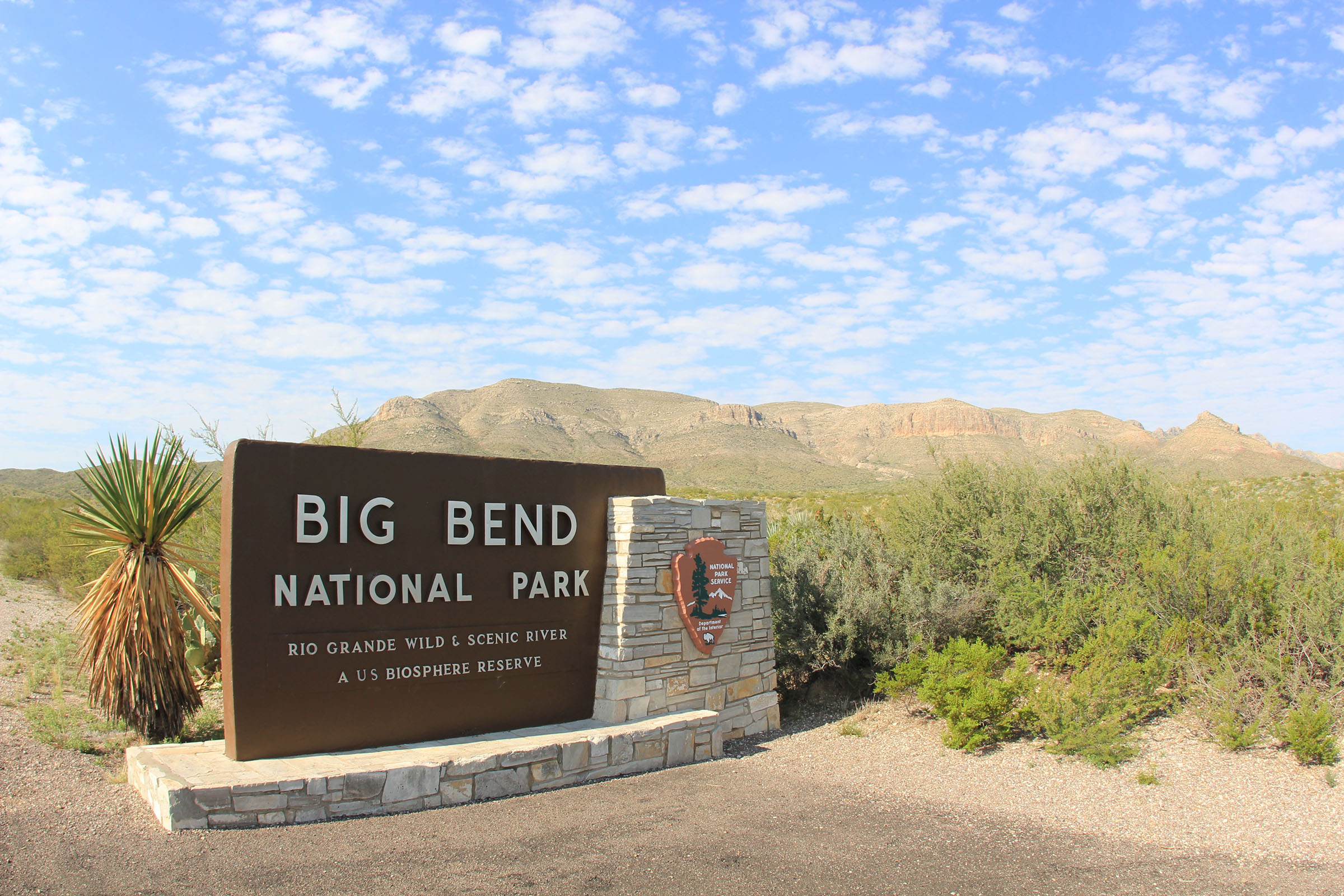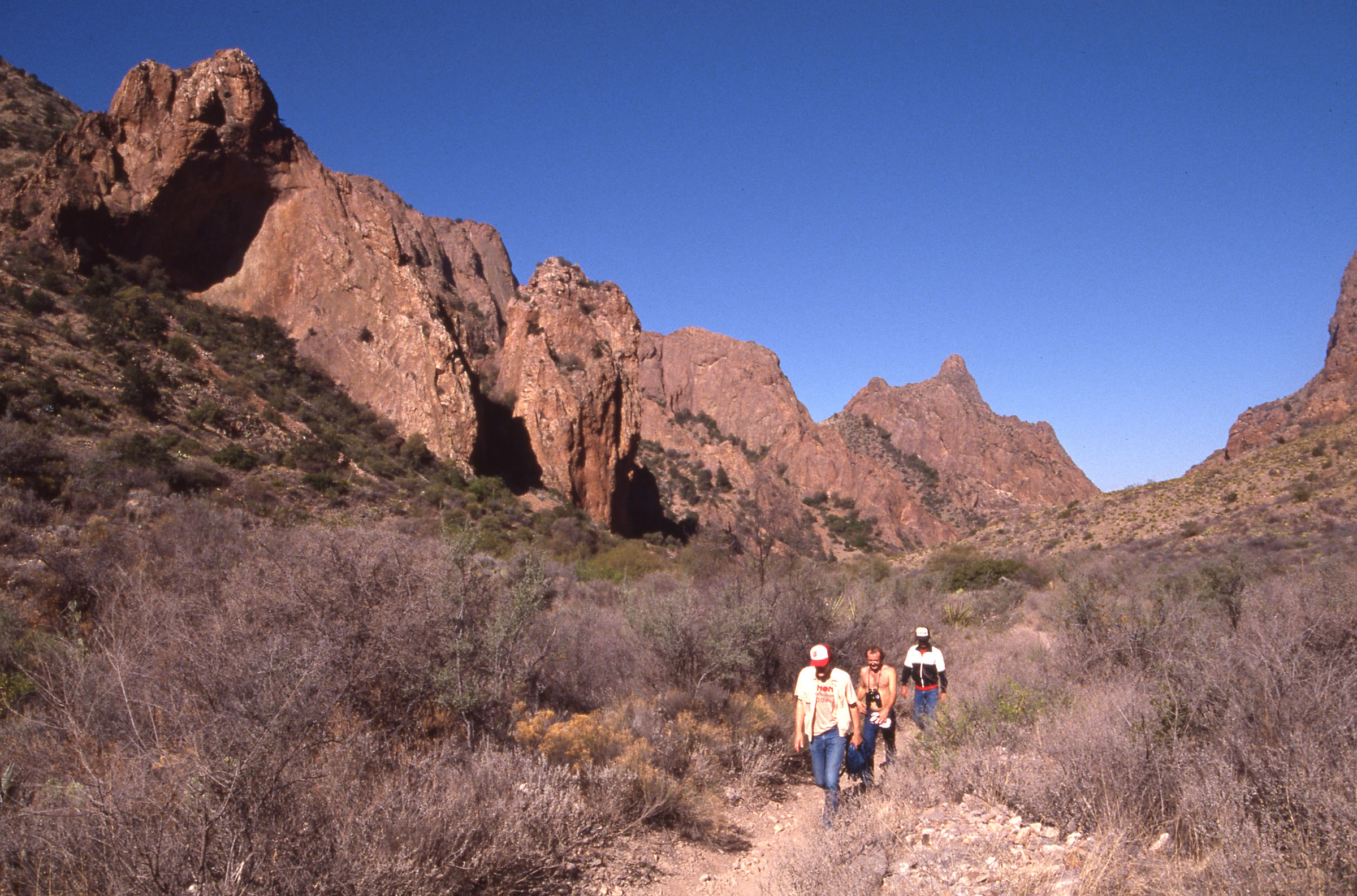
Photo by daveynin via Flickr, CC BY 2.0
Texans love the prickly wilds of Big Bend National Park, where a sky island of mountains rises from a vast desert floor, and everything looks straight out of a John Wayne Western.
But if you’ve never visited, it can feel intimidating.
“It’s wild, it’s rugged, and we’re far from a lot of services that people are super accustomed to,” says Tom VandenBerg, chief of interpretation and visitor services at the park. “That’s what makes it special.”
According to a report released in May, the number of first-time visitors to Big Bend National Park jumped in 2022, with 56% of the 1,000 people surveyed saying they made their inaugural trip there last year. For a newcomer, the vastness seems almost unreal.
The park sprawls over 801,163 acres in far West Texas—making it bigger than Yosemite National Park in California. At first glance, it’s a remote, bristly expanse populated by things determined to scratch, poke, or bite you.
Don’t freak out.
Yes, cacti are everywhere. Steer clear. Venomous snakes sometimes slither among the rock and cactus; watch where you place your hands. Black bears reside in the park. Give them a wide berth and consider yourself lucky if you glimpse one. And keep an eye out for scorpions, tarantulas, and javelinas, too.
Most of all, plan ahead and know what to expect when you get there.
When to Go
Peak visitation at Big Bend National Park is October through April. In summer months temperatures can reach 110 degrees along the Rio Grande and on the desert floor.
How to Get There
Get ready for a road trip. Most folks drive to the park. Major highways to the region include Interstate 10 (if traveling from Houston, San Antonio, or Austin), Interstate 20 (if coming from Dallas and Midland-Odessa), and State Highway 90 (via Del Rio). See map. The nearest commercial airport is in Midland-Odessa, about 235 miles from park headquarters.
Where to Stay
The Chisos Mountains Lodge in the Chisos Mountain Basin offers basic hotel rooms and five stone cottages. Book ahead, but also keep in mind the lodge’s headquarters building is scheduled for demolition and reconstruction starting in 2024. Even though lodge rooms won’t be torn down, they will likely close temporarily—as will the restaurant. Camping is a great option, either in one of the park’s three developed campgrounds or in the backcountry. (Permit required.)
Hotels, private campgrounds, and an eclectic mix of rental properties that includes yurts and clear domes are also available in nearby Terlingua or Study Butte, or in Marathon.
How Much Does It Cost
Admission to the park is $30 for a private vehicle or $25 for a motorcycle for seven days.
What to Bring
You won’t need anything fancy, but you will need good hiking shoes; lightweight, loose-fitting clothing; a hat with a wide brim; sunscreen’ insect repellent; snacks; and lots of water. If you plan to go off trail in the backcountry, bring a compass.
What to Do
It’s all about hiking at Big Bend National Park, and you’ll find more than 150 miles of trails in the mountains, along the desert floor, and near the Rio Grande.
The challenging 12-mile South Rim Trail climbs 2,000 feet to the top of a ridge, where the desert floor ripples away like gray-green elephant hide into the distance. Hardy hikers can scramble to the top of Emory Peak, the highest point in the park at 7,825 feet.
For a shorter but equally spectacular hike, opt for the Window Trail, a 5.5-mile round trip to a notch in the rock where water pours over the lip, framing a perfect, wedge-shaped view of the Chihuahuan Desert. The Lost Mines Trail offers a lot of bang for the buck, in the form of big views of surrounding mountains.
Don’t miss Santa Elena Canyon, where the Rio Grande cuts through a narrow high-walled canyon, and a trip to the historic hot springs, where you can dip a toe (or more) in an old stone-lined pool at the edge of the river.
Beyond the Park
Not all the coolest attractions are located inside park boundaries.
Terlingua, a 20-minute drive to the west, is an old ghost town with an eclectic mix of mining ruins, lodging options that include tipis and clear domes, outfitters that offer guided rafting and cycling trips, the Terlingua Trading Company & Bookstore, and a handful of restaurants, including the Starlight Theatre Restaurant & Saloon (with a front porch, where musicians often gather and entertain visitors) and the newly reopened La Kiva.
Even farther west you’ll find the resort of Lajitas, which offers lodging, a golf course, a small store, and a pen that houses the town’s mayor, a goat named Clay Henry. From Lajitas, you can access the even wilder terrain of Big Bend Ranch State Park, known for its mountain biking and remote camping opportunities.

Hikers on the Window Trail in Big Bend. Photo by Richard Reynolds
Advice from a Ranger
Before you head out, remember where you’re going, says park ranger VandenBerg.
“Don’t be surprised when you get here that it’s a desert and it’s very, very hot,” he says. Check the official park website for the latest information regarding park closures and conditions (such as heat advisories) and remember that reservations are needed for all campgrounds and lodging within the park.
Bring all the essentials you’ll need during your stay. Nearby Marathon and Terlingua offer a few staples, and there’s a camp store in the park, but the nearest full-service shopping is in Fort Stockton, a two-hour drive from Panther Junction.
“There’s not a Walmart right down the street,” VandenBerg says. “It’s very limited so come with what you need.”
Next, slow down.
“Parks are a national treasure, and you shouldn’t rush,” VandenBerg says. Some park roads are paved, but others are gravel and rugged enough that you’ll need four-wheel drive. “Our roads are designed for a leisurely 40 mph and anything faster is dangerous.”
Know your capabilities. “Hiking many miles in a desert isn’t for everybody and that’s OK. Don’t overestimate your abilities and do not underestimate the desert.”
Park officials recommend carrying a gallon of water per person a day, or two liters per half day. “Even in winter, [Big Bend] can be very hot and heat illness can be a concern any time of the year,” VandenBerg says.
Fourth, consider leaving Fido home. Dogs are allowed in the park but not on trails, and they must be on a leash at all times.
Cellphone service is spotty, but you can usually get reception at Panther Junction Visitors Center. Beyond that, don’t count on it.
Most important of all, have fun. “Enjoy the park for what it is, be open to it and curious about it,” Vandenberg says. “It’s a dramatic, wild place filled with wildlife and big open places, but realize it is a desert and you do need to respect it.”








